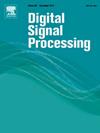Joint beamforming design for STAR-RIS-assisted integrated sensing, communication, and power transfer systems
IF 3
3区 工程技术
Q2 ENGINEERING, ELECTRICAL & ELECTRONIC
引用次数: 0
Abstract
In the sixth-generation network, many low-power devices are predicted to be integrated into tasks incorporating communication and sensing. The integrated sensing and communication (ISAC) technology reuses a wireless signal for data transfer and radar sensing. Furthermore, wireless signals have the capacity to transmit energy, allowing for the simultaneous wireless information and power transfer (SWIPT). To enhance spectrum utilization, the deeper integration of SWIPT and ISAC has opened up novel investigate directions for integrated sensing, communication, and power transfer (ISCPT). This paper investigates a simultaneously transmitting and reflecting reconfigurable intelligent surface (STAR-RIS) supported ISCPT system that solves the problem of traditional RIS not achieving full space wireless signal coverage. In particular, since the serious path loss issue of sensing, we propose a novel architecture for installing dedicated sensors on STAR-RIS. Under this setting, we jointly optimized the passive beamforming at STAR-RIS and the active beamforming at base station to minimize the Cramér-Rao bound (CRB) used to estimate the sensing target's two-dimensional direction of arrivals, while being constrained by the lowest signal-to-interference-plus-noise-ratio (SINR) of communication users (CUs), the lowest energy harvesting (EH) of energy users (EUs), and the maximum transmission power at base station. For complex non-convex problems, a proposed two-layer cyclic algorithm utilizes penalty dual decomposition (PDD) and block coordinate descent (BCD). Finally, the numerical outcomes verify the efficacy of our suggested design, which reveals the performance trade-off between communication, power transmission and sensing. Furthermore, compared to traditional RIS, the estimated CRB of this design is lower.
STAR-RIS 辅助集成传感、通信和电力传输系统的联合波束成形设计
在第六代网络中,许多低功耗设备预计将被集成到通信和传感任务中。集成传感与通信(ISAC)技术可重复利用无线信号进行数据传输和雷达传感。此外,无线信号还具有传输能量的能力,可同时进行无线信息和功率传输(SWIPT)。为了提高频谱利用率,SWIPT 和 ISAC 的深度集成为集成传感、通信和功率传输(ISCPT)开辟了新的研究方向。本文研究了一种同时发射和反射的可重构智能表面(STAR-RIS)支持的 ISCPT 系统,该系统解决了传统 RIS 无法实现全空间无线信号覆盖的问题。特别是,由于传感存在严重的路径损耗问题,我们提出了一种在 STAR-RIS 上安装专用传感器的新型架构。在此背景下,我们联合优化了 STAR-RIS 上的无源波束成形和基站上的有源波束成形,以最小化用于估计传感目标二维到达方向的克拉梅尔-拉奥约束(CRB),同时受到通信用户(CUs)的最低信噪比(SINR)、能源用户(EUs)的最低能量收集(EH)和基站最大传输功率的限制。对于复杂的非凸问题,提出的双层循环算法利用了惩罚二元分解(PDD)和块坐标下降(BCD)。最后,数值结果验证了我们建议的设计的有效性,揭示了通信、功率传输和传感之间的性能权衡。此外,与传统的 RIS 相比,该设计的估计 CRB 更低。
本文章由计算机程序翻译,如有差异,请以英文原文为准。
求助全文
约1分钟内获得全文
求助全文
来源期刊

Digital Signal Processing
工程技术-工程:电子与电气
CiteScore
5.30
自引率
17.20%
发文量
435
审稿时长
66 days
期刊介绍:
Digital Signal Processing: A Review Journal is one of the oldest and most established journals in the field of signal processing yet it aims to be the most innovative. The Journal invites top quality research articles at the frontiers of research in all aspects of signal processing. Our objective is to provide a platform for the publication of ground-breaking research in signal processing with both academic and industrial appeal.
The journal has a special emphasis on statistical signal processing methodology such as Bayesian signal processing, and encourages articles on emerging applications of signal processing such as:
• big data• machine learning• internet of things• information security• systems biology and computational biology,• financial time series analysis,• autonomous vehicles,• quantum computing,• neuromorphic engineering,• human-computer interaction and intelligent user interfaces,• environmental signal processing,• geophysical signal processing including seismic signal processing,• chemioinformatics and bioinformatics,• audio, visual and performance arts,• disaster management and prevention,• renewable energy,
 求助内容:
求助内容: 应助结果提醒方式:
应助结果提醒方式:


